

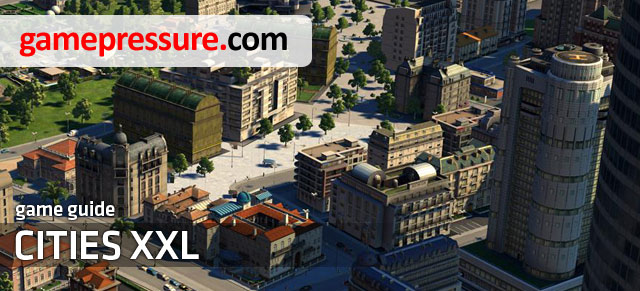
If you were always interested in how it feels to move in some secluded places and to establish a new village, the game Cities XXL will let you experience that. Become founder of one of the largest cities. Unfortunately, a mayor doesn't live in clover. He or she is administrator, benefactor, judge and "the bad guy" at once because you can never make everyone happy. The challenge is to solve dozens of problems, to satisfy hundreds of needs, to spend millions of dollars. And there's also the budget whose variance always has to be favourable.
Following subjects are raised in the guide:
Dawid "Kthaara" Zgud ()
In the guide you can find the following marks:
Black colour - important information and references to pictures.
Brown colour - Buildings and permanent structures.
Green colour- Areas.
Orange colour - Infrastructure and resources.
Blue colour- Interface components.
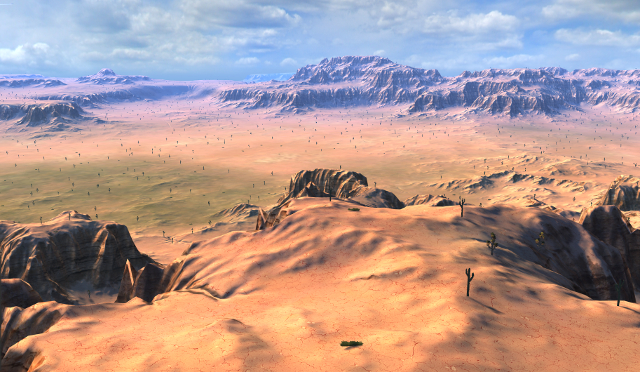
The choice of map is the most important measure of difficulty level of the game. Read following tips if you want to know how to make your game easier or more difficult.
1. If you want to build a city without too much trouble, choose a map with flat ground. Among such good maps are: plains, plateaus, deltas and peninsulas. This is where flat ground dominates and conditions are good for farmers and sometimes for tourists. Usually, there is no oil.
2. For those who prefer a more challenging city, a map with mountains or other diversity of ground will be a good choice. Good examples are mountains, deserts and archipelagos. Some of them contain significant deposits of oil, others will be perfect for tourism but it is very rare that there's water and agricultural areas.
3. No matter which map you choose, there will always be flat areas as well as steep ones. Try to build your city on flat ground, far from mountains. It's difficult to build on steep slopes, you have to find a right approach angle. But sometimes on the tops of the slopes you can find interesting resources such as oil or fertile ground.
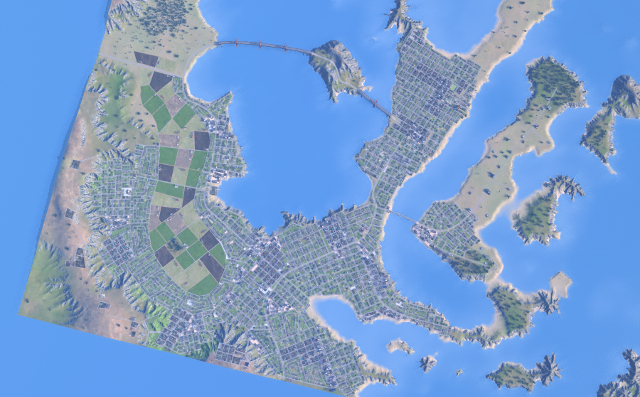
Turning a piece of map into a flourishing metropolis is no small feat. Here are some tips how to do it.
1. In the game you don't have access to all features at once. To unlock subsequent areas or buildings you have to prove that you administer your city well and that you encourage new inhabitants to come. Numbers such as 1000, 5000, 10.000, 25.000 etc. are thresholds.
2. Never ever let your budget end up with an adverse variance. It can lead to huge financial troubles and to city's bankruptcy. Try to improve the budget's situation by trade with Omnicorp or destroy the most expensive buildings (if you can). Loans come in extreme necessity.
3. Always try to expand your city in breadth before you expand it upwards. In other words, try to use flat ground to build many new low-density zones. But be careful because there is no way to improve a zone - it means that in order to build medium density zones in the place of low density zones, you will have to destroy the buildings. Besides, high density plots occupy more space!
4. Try not to build public buildings too early. Build them only when people start to demand it and do not place them too densely. While building them keep in mind to meet the needs - the elite will not go on the court to kick the ball, they will rather choose the golf course.
5. The solution to the problem of a huge number of cars and traffic jams is generally public transportation. Building depots and bus lines may greatly improve the communication capabilities of the city. However, the elite will never choose public transportation and even the tube won't convince them.
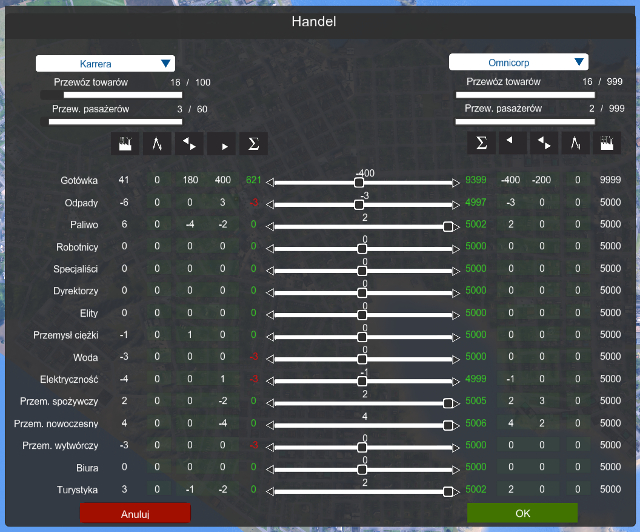
Trade is an integral part of the city budget. Already after tens of minutes of the game you will be able to sell the surplus and you will have the need to purchase shortages.
1. The city in its buildings produces some goods as Fuel, Electricity, Water Heavy Industry's goods or Office Services. It uses it on its own but usually produces a surplus that can be sold for cash.
2. Sometimes a city can't handle certain fields on its own, for example, in the desert there is no water and you will need to buy it. However, try to supplement deficiencies as much as possible in the city, e.g. if there is no office services build additional plots for offices.
3. Exchange will be made in the form of so-called tokens. Production of tokens should be the main objective of specialization of a town in specific locations on the globe.
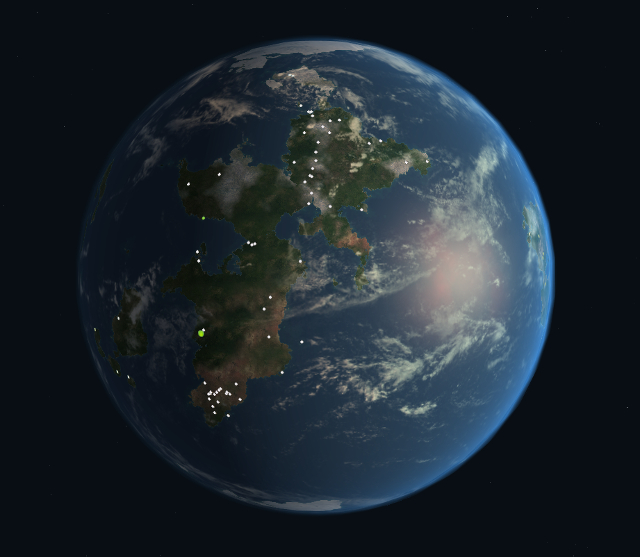
The map is a very important factor determining the difficulty of the game and city's development.
You select on the globe - click one of the white dots to see the description of the site which lies beneath it. You can choose among very diverse areas - from sandy beaches, islands, peninsulas and coast through plains dotted with hills, plateaus, river deltas and lakes to soaring mountains, deserts and cliffs.
Each type of terrain determines the materials appearing on its site. You can see them in the form of stars in the selection of maps. Zero stars is the lack of raw material. Three stars stand for abundance of sites at which it occurs. And so you will not find a fertile land in the mountains so forget about agriculture. However, the snow-capped peaks are perfect for ski resorts, so tourism will flourish. There is no water in the desert but under your feet there are probably other liquids - oil. Examples can be multiplied but there is no map where a city would be completely self-sufficient in every way.
When you've made your decision, type city's name and press OK.
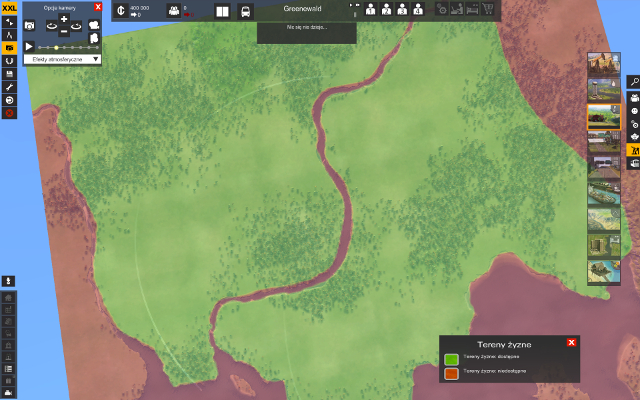
At the very beginning, when you load a map, look at what area you came to build the city. Expand the raw material panel on the right side and see if you have areas of Petroleum, fertile soil, aquifers and tourism opportunities. Only then make decision on where to start constructing the city.
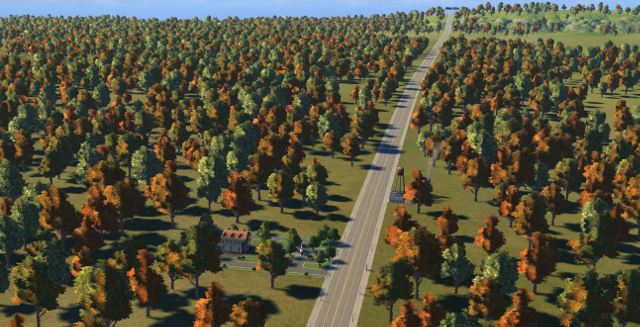
You need to take several steps common for each new city. Construction must be carried out exactly in the shown order - the game does not allow any flexibility.
1. Build a road leading to the edge of the map - intercity road. This is the first step of the city's founding - thanks to it there will appear new residents and goods will be exported.
2. Build the Town Hall. This building provides access to the basic administration of the city - the greater the Town Hall is, the faster the city can grow. There is a relation between the size of the Town Hall and the rate of influx of residents but it is not a huge increase.
3. Build a Utility Center. This structure will provide basic services to a new city - it provides Electricity, Water, Fuel and processes a small amount of waste. Unfortunately, it's not enough for a long time and soon you will need to think about meeting these needs in a different way.
Once you dealt with these elements you will have access to low density areas, but still not all of them. Build a dozen of plots for Workers. You will get access to the Heavy Industry. Then build several plots for offices and plots for Skilled workers who will work in them.
At the beginning, build several plots for shops - retail satisfaction is very important but do not overdo it. At the beginning, two or three stores are enough.
At this point you can already start thinking about specialization - if you have large tracts of fertile land, begin covering it with farms. They need only workers to function and the agricultural products can be used in trade.
You have probably noticed that you neither have access to the manufacturing and modern industry, nor you have the possibility of building apartments for Executives and Elites. But first things first. After reaching the appropriate population number, access to these structures is unlocked.
If your balance begins to go in an undesirable direction - that is begins to fall or, worse, you will lose money, open the trade window and sell all the surplus. The indicator of Resources window will inform you about the surplus. The red rectangle with a line on the left means a large surplus of one of the raw materials. Business will help to quickly make up for the losses caused by the construction of new plots or will fill up a hole in the budget.
The most important element of your city and the main resource are people. When there are not enough people, the economy will experience shortages and companies will go bankrupt due to shortage of workers. However, if you have too many people, high unemployment rate will lead to a large dissatisfaction.
The population is divided into four social categories: workers, skilled workers, executives and elites. It is a very conventional division because not every company needs executives and not all executives work in managerial positions.
Workers at the beginning are a very large group - they work on farms and in the industry as well as sellers in stores. However, when the city's economy starts to change into a more modern one, their number reaches a steady, stable level with small fluctuations generally related to the size of the heavy industry and manufacturing. They have moderate needs.
Skilled workers constitute a middle class - they work generally in offices and as managers in factories. But when elements of modern industry appear, they will be employed as ordinary workers en masse and their number will prevail unskilled workers. In addition, the majority of public buildings require them as employees. Their needs can be a bit more problematic.
Executives are upper class. At the beginning, they work only on high positions in factories and offices but in the modern industry they will do a regular honest work. Virtually all high-density buildings need them. They require many amenities - a large number of shops and entertainment centers.
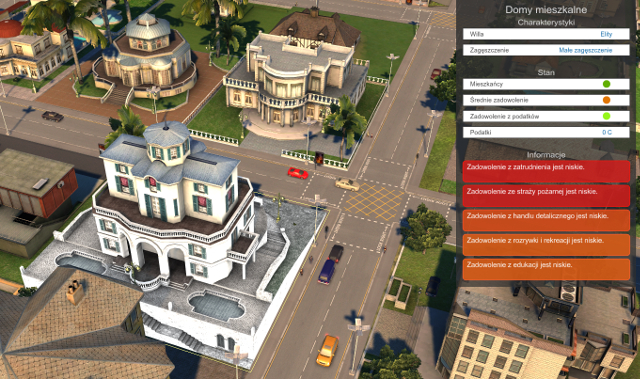
The Elites are cream of society. They don't engage in the dirty work, they are presidents, vice-presidents, chefs, ministers and their secretaries. Advanced areas and special buildings require them. To meet all their needs is almost impossible.
You have to be constantly taking a look at Demographic statistics on the toolbar. It will show you the employment rate for the number of people available to work. It will also show you satisfaction of different domains - entertainment, trade, labor and taxes. You should take care of it, at least to about 70% to make people think they are doing well.
Maintaining a constant influx of people is not very difficult. The basic element of their satisfaction is work, so create new plots according to your plan of specialization or look at resources and try to fill up deficiencies. When new jobs are created, entrepreneurs will let you know which employees they need - then build several new housing plots.
However, remembering about everything that people need is impossible so after a while people demand the objects you've forgotten about - sometimes it is a shop, sometimes a swimming pool or a playground for entertainment. Executives and Elites provoke most problems as their level of compliance is much higher than the one of lower classes.
Remember about streets' passability - after reaching 50,000 of inhabitants public transportation becomes available. Buses can greatly decrease traffic problems if they are carried on in the right way. For the convenience of the residents, try to build as little as possible zones of unrestricted shape, choose rather rectangular ones as in rectangular plots bus stop reaching areas are much larger. The working class will be happy to benefit from such a means of transport.
You have probably already noticed that almost all of the buildings (except residential buildings) buy some resources and produce others. For example, a Manufacturing Factory buys electricity, goods of Heavy Industry and Office Services and manufactures products of manufacturing Industry.
These goods can be easily accessed - when there is a balanced market or a surplus. They can also be difficult to get - when there is a shortage of them and/or your objects do not keep up with production. The city is a part of a giant network of commodity dependencies.
Some of these "goods" are municipal services and it's the city which provides them - by building a power station you will generate electricity and by setting a landfill you will ensure waste collection; by building an oil well you will extract fuel.
A big part is produced by other objects in the city - factories of subsequent levels provide adequate goods that are consumed by the city for their own purposes or for export. By constructing office buildings you will provide office services to companies that work much worse without them.
Some goods, however, such as fuel, water, food and tourism are determined by the map. If the map does not contain land with oil, you will have to import fuel from other cities. If you have a large amount of fertile soil on your map, it is good to export food.
Another problem can be providing adequate services only indirectly dependent on your management. Most of the factories need transport services to prosper well. They handle it on their own but their quality depends on how easy it is to get out of town. The more traffic problems there is in city, the more difficulties there are with transport services. Sometimes you have to run to extremes - demolish some of the buildings to build a new wider road. Its costs will be recompensed by taxes which will increase - they are calculated according to profits of companies.
Having got used to the site and obtained an accurate income, you can now think of the specialization of the city. Satisfying the needs of residents and concerns' appetites may prove in the long run very expensive. Therefore, you can or even have to focus your efforts on exporting the surplus goods outside the city's borders.
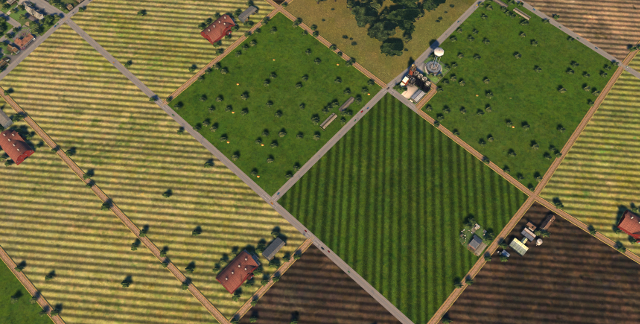
If you have large tracts of fertile land focus on food production. Farms require neither large amounts of money nor many workers but production of food can be very lucrative.
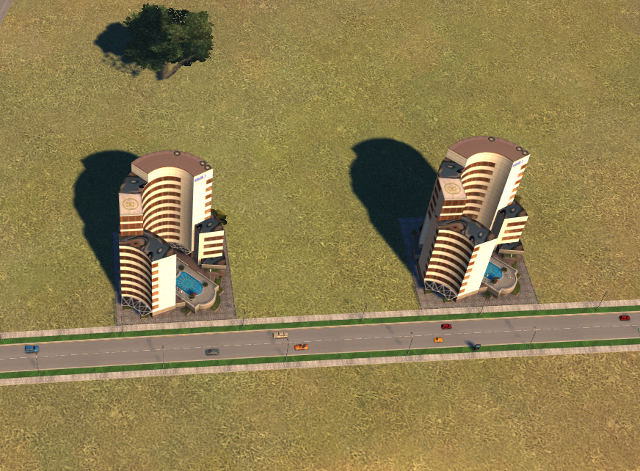
If you have an area good for tourism, you can build a lot of tourist hotels - tourism is treated as a resource and you can export its tokens offering travel services to inhabitants of other cities. Luxury hotels require qualified personnel.
Water is usually a sought kind of resource in the desert but you can find aquifers near rivers and lakes. However, the extraction and export of water is usually not that profitable because of a high cost of maintaining the pump Station. You will need a lot of it to cover the costs.
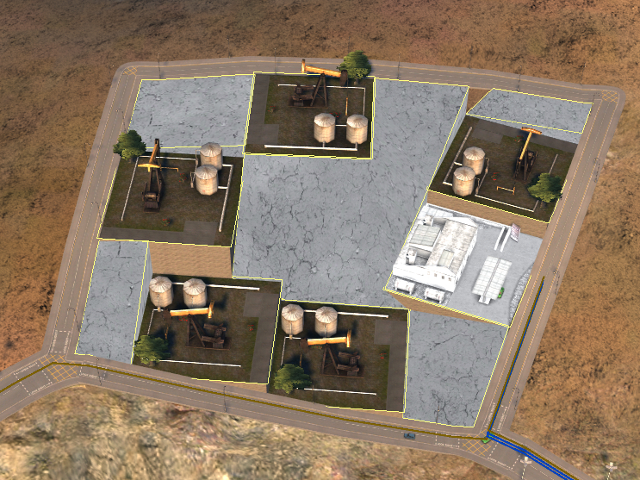
Fuel is the most consumed resource in the city (next to electricity). If you have oil fields, for example in the desert, you can build oil wells that will extract the black gold. Extracted fuel is used in your city and the surplus can be sold.
Other resources are made basing on those already mentioned or created using appropriate buildings and people. Such resources are products of industry, office services, waste treatment etc.
For virtually any resource there are several buildings that significantly improve the performance of buildings producing the product allowing you to increase export or to fill the gap when its production is not enough for the population of the city itself.
The most common specialty is investment in the farms. They are not expensive and the costs pay off quickly. A less lucrative but still profitable business are tourist hotels because you don't have to pay extra to make them function. Fuel is necessary, many maps do not have this resource at all so it has to be imported from outside.
Water for its part is a rarely exported good. Except when you have a surplus of production for the city because an extra construction of pumps is unprofitable.
Each map has a certain predisposition to fulfill a specific role. It does not necessarily have to be a giant metropolis with skyscrapers soaring over the entire surface. It may be, for example, a combined group of villages encircled by vast fields and farms if it only can bring a fair income to the municipal coffers.
Your first contact with trade should take place after less than or about one hour when the factories or farms will start to produce excess goods. You can sell them in order to make up for the losses in the budget made by the development of the town.
As the village develops you will start to notice deficiencies manifested as negative number of tokens of a raw material. Soon there will be shortages of fuel and electric current. Don't worry about it as long as their availability isn't showed with the yellow marker. Its supplementation in the city is normal so build appropriate buildings such as power stations and oil wells.
And what if there are no suitable areas (in this case oil fields)? When commodity becomes difficult to obtain the only way is to buy it in Omnicorp or in one of other cities built earlier.
Omnicorp is this kind of vendors that you can sell everything and buy also everything but more expensive than it would normally be sold. As in life. It allows you to quickly increase the amount of available cash inflowing to your budget and you can trade with it even if you have a negative balance.
Trade with other cities is a bit more varied. At first you need to build those cities yourself and specialize the production of goods that you need. Then you can start the exchange of goods with them. These cities aren't controlled by anyone so if you are honest or not in any way in this exchange is up to you.
To be capable of trading with you, a city has to have a positive balance which means that the city itself (without trade) has to have a positive balance. Otherwise you will see a message that the export is not possible even when you want to engage in barter.
Services such as tourism, office services or waste treatment are also goods. You can trade it in the same way as other goods.
You trade goods in the form of so-called tokens. One token is a certain amount of surplus / shortage of goods. It is not predetermined, it is also practically impossible to determine how many buildings will be needed to produce a given amount. The produced amount depends on various factors: those obvious like the availability of raw materials but also less obvious such as the distance from the road or quality of life in the area in case of some institutions.
Omnicorp buys surplus in the form of such tokens, 40-50 cash tokens each - one token is 100 cash credits. In Resources, all your cash balances are also shown in tokens so you can quickly find out the state of your economy.
There are some restrictions to trade - every intercity road gives you the opportunity to exchange only 20 tokens. At the beginning that's a lot but after an intense development it is the number right for the export of one raw material. So build new roads, ports and airports which will increase the pool (although they are expensive to maintain).
To sum up, the trade will allow you to get rich quickly. There is no problem to get a couple of millions in your account in a couple of hours only by selling the surplus. Specialized cities can reach tens if not hundreds of thousands dollars of revenue per month!
If you are already familiar with the game and you would like to have more fun, you can go to options and in game settings select Expert Mode.
This mode gives you access to all kinds of areas at once - from small sections for workers' houses to plots for huge multilevel office buildings. This is good but on the other hand - not necessarily.
A good aspect is the possibility of building immediately medium density zones - so we avoid demolition of old buildings in order to build skyscrapers in the city center. However, one drawback is that when you build a high density factory, you need a lot of different types of workers immediately.
The workers will immediately begin to demand everything - lots of shops, schools, police, entertainment etc. And you can access the building only after reaching the relevant thresholds (e. g. 5000 citizens). An additional drawback is the price of new zones. Plots can cost thousands of credits per item and you have only 400,000 of them at the beginning.
However, the expert mode's advantages greatly outweigh its disadvantages. The possibility to build higher density zones results in much sooner arrival of new people to the city. But remember about all aspects of such rapid development - more people at once means faster emerging unemployment and higher requirements for trade and entertainment.
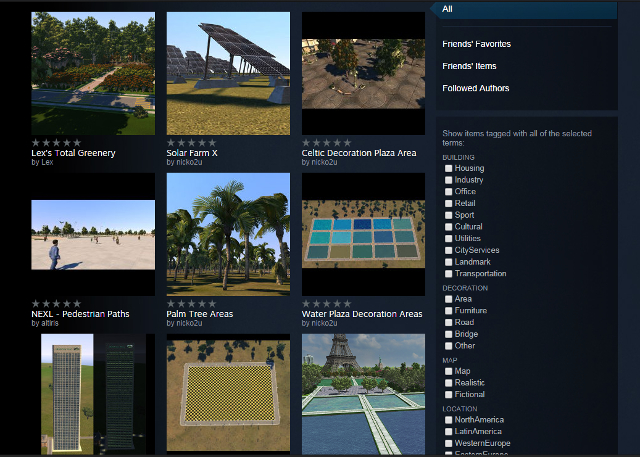
The game is designed to use multiple mods. I quote here a couple of the most popular, active also in previous editions of the games in this series. I believe that the most important mod for this game is No More Boxed Cars mod. It converts the gray rectangles we see on the streets at a quite large distance to normal models of vehicles. Otherwise, all the streets look like a big store of cardboard boxes. Other mods usually focus on adding a lot of new elements. These are buildings, decorations, roads, bridges, and many other attractions to make your game and the view of the city more pleasing but they don't have much impact on the course of the game.

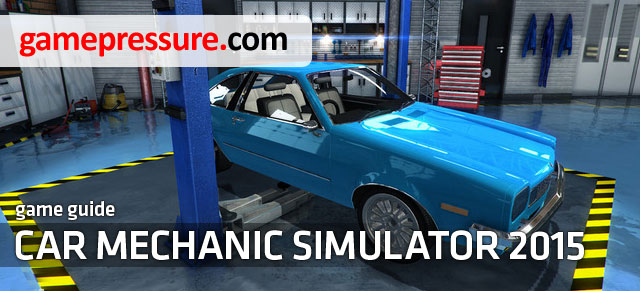


 Call of Juarez: Bound in Blood Game Guide & Walkthrough
Call of Juarez: Bound in Blood Game Guide & Walkthrough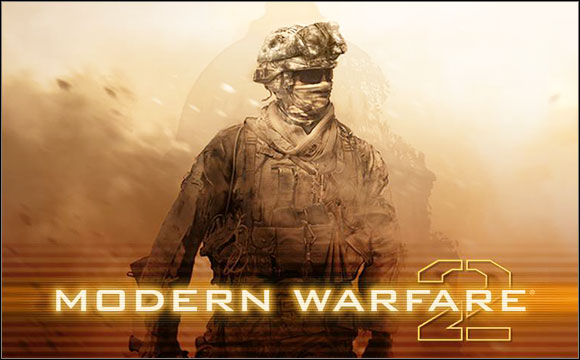 Call of Duty: Modern Warfare 2 Game Guide & Walkthrough
Call of Duty: Modern Warfare 2 Game Guide & Walkthrough Crysis 3 Game Guide & Walkthrough
Crysis 3 Game Guide & Walkthrough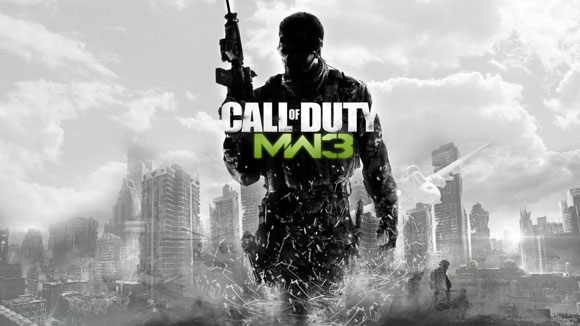 Call of Duty: Modern Warfare 3 Game Guide & Walkthrough
Call of Duty: Modern Warfare 3 Game Guide & Walkthrough Car Mechanic Simulator 2014 Game Guide & Walkthrough
Car Mechanic Simulator 2014 Game Guide & Walkthrough